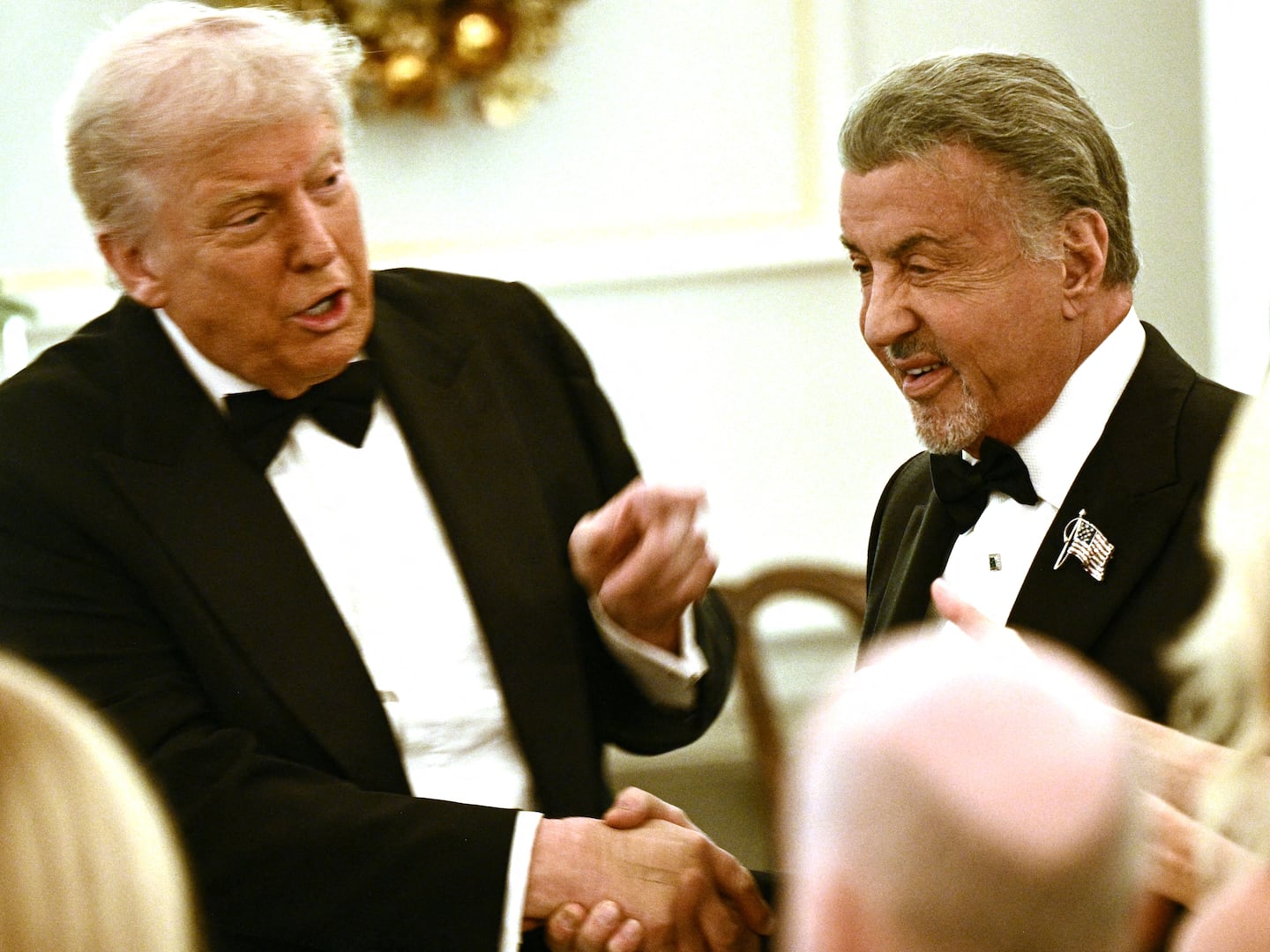From the point of view of America's politicians, the most significant thing about Neil Armstrong was that on July 20, 1969, when he became the first man to set foot on the moon, he was a civilian. Unlike his fellow Apollo 11 astronauts Buzz Aldrin and Mike Collins, Armstrong was not a military officer assigned to NASA. It would have been too much of a contradiction if the lunar plaque signed by Richard Nixon, which read in part, "We came in peace for all mankind" was put in place by a U.S. Air Force lieutenant colonel or a Navy commander.

It was not that Armstrong had never served in the military. As a naval aviator during the Korean War, he'd flown F9F Panther fighter-bombers from an aircraft carrier off the coast of North Korea. In the course of five combat tours he earned a reputation as one of the best pilots in the Navy.
But he quit the Navy after graduating from Purdue, becoming a full-time civilian researcher and test pilot, first at the Lewis National Advisory Committee for Aeronautics (NACA) center outside Cleveland, Ohio (now called NASA Glenn), and later out of the legendary Edwards Air Force Base in the California high desert. There, Armstrong became famous for flying the dangerous and temperamental X-15 rocket plane. His March 1962 X-15 flight took him up to 207,000 feet in altitude. Not quite high enough to earn one's astronaut wings, but a remarkable feat.
Inside the small world of military aviation, his exploits as a test pilot are still spoken of with awe. One of the stories that is told is that after landing a plane in the desert after its engines had both failed, Armstrong was rolling to a stop when he saw an obstacle that he was about to crash into. According to the legend, he used his speed and the flaps and rudders of his aircraft to force the plane up onto one wheel and, like a movie stunt driver, swerved around the obstacle precariously balanced on a single bit of rubber.
Other stories tell of his close calls and the controversial landing he made on what was supposed to be a dry lake bed in Nevada. In fact, it was a bit too muddy to hold up the weight of the two-seat T-33 training jet he was flying, and its wheels sank into the mud, apparently much to the amusement of his passenger, Chuck Yeager.
His skill as a research and test pilot certainly impressed Buzz Aldrin. Armstrong was “the best pilot I ever knew,” Aldrin said in an interview with The Daily Beast shortly after his former colleague’s death. That is high praise indeed coming from a man who had flown F-86 jet fighters in combat in Korea and who has his own impressive set of flying and technical academic credentials. Armstrong's ability to memorize the smallest engineering detail and to be able to explain, in even more detail, the intricate working of any aircraft he tested made him the outstanding test pilot of his generation. To this day, within military aviation, he is famous for his "steel trap" mind and his unflappable demeanor.
He joined the NASA astronaut corps in September 1962, a bit more than a year after President Kennedy had committed America "within this decade" to "landing a man on the moon and returning him safely to Earth.” Armstrong entered astronaut training confident of his abilities; as he told his biographer James Hansen, he had "worked actively with the guys in the simulator lab constructing simulations to try and investigate problems."
Since the Apollo project involved doing things that had never been done before—landing a rocket-powered vehicle on the moon, to be precise—learning how to simulate unprecedented maneuvers was essential. Intense and repeated training in high fidelity simulators has always characterized preparation for manned spaceflight, especially at NASA. Armstrong was not only able to take full advantage of this training, but helped establish the tradition that NASA astronauts will always be superbly well prepared for their missions.
His first spaceflight was the Gemini VIII mission flown in March 1966 with his partner David Scott. The mission included America's second spacewalk and the first rendezvous and docking maneuver, an essential spaceflight technique not only for the Apollo missions but for almost all subsequent space operations. For example, the International Space Station could never have been built without using the techniques Neil Armstrong helped pioneer on the Gemini VIII mission.
While the NASA program recovered from the January 1967 Apollo 1 disaster that killed Gus Grissom, Roger Chaffee, and Ed White, Armstrong was hard at work helping develop the Lunar Landing Training Vehicle. This was a weird-looking, dangerous jet- and rocket-powered contraption, sometimes called the flying bedstead. According to Buzz Aldrin, it was used to train Apollo mission commanders in the piloting skills they would need to land on the lunar surface. Armstrong was flying one on May 6, 1968 when it crashed. Armstrong ejected and parachuted to safety. According to one source, he walked away without a drop of sweat on him; behind his eyes the pilots and technicians could almost see him calculating and figuring exactly what had caused the explosion. Thanks to Armstrong's ability as an engineer, the problem (a faulty thruster) was quickly identified and repaired and training for the lunar landing was quickly resumed.
The choice of the Apollo 11 crew was partly predetermined by the fact that Aldrin and Armstrong had trained together as backup for a previous mission. Once Armstrong had been picked to be the commander, he quickly decided that he wanted Aldrin in the lunar module with him and that Mike Collins would be the best man for the job of commanding the Apollo capsule itself.
Together, on July 16, 1969, they rode the giant Saturn V into orbit, flawlessly connected their capsule to the lunar lander, and rocketed out of Earth’s orbit heading for the moon. Arriving in orbit around the moon, Armstrong and Aldrin in the Lunar Excursion Module (LEM) detached from Collins in the Apollo capsule and began the nerve-wracking descent towards the moon's surface.
Armstrong flew the LEM while Aldrin manned the primitive flight computer. As Buzz Aldrin explained, "At 500 feet the commander [Armstrong] took over manual control to get a feel for what the spacecraft was like before going for the landing." Armstrong made a few last-second maneuvers to avoid some dangerous rocks and successfully landed on the moon on July 20, 1969. All the hard years of training, education, and experience had paid off; Armstrong had made it look easy.
Notoriously, as he stepped onto the moon Armstrong intended to say, "It's a small step for a man, a giant leap for mankind." Instead he pronounced the now immortal, but grammatically infelicitous words, "It's a small step for man, a giant leap for mankind."
They returned to Earth and entered immediately into a twilight realm, somewhere between myth and history.
It was not until 1979, when Tom Wolfe published The Right Stuff, that people outside the tight fraternity of military pilots understood just what the Apollo program had meant to the men who flew the missions. "A career in flying was like climbing one of those ancient Babylonian pyramids made up of a dizzy progression of steps and ledges, a ziggurat, a pyramid extraordinarily high and steep; and the idea was to prove at every foot of the way up that you were one of the elected and anointed ones who had the right stuff and could move higher and higher and even—ultimately, God willing one day—that you might be able to join that special few at the very top, that elite who had the capacity to bring tears to men's eyes. The very brotherhood of the Right Stuff itself. "
No one ever said it out loud, but it became obvious that at the very top of the ziggurat stood a modest, smiling, engineer from Ohio: Neil Armstrong.
In an age when flying largely consists of programming computers and when the end of manned combat flying is one or two decades away or maybe less, Neil Armstrong's place at the very top of the ziggurat is secure, forever.






